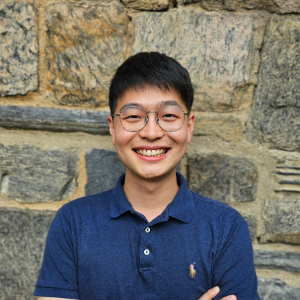From Lab Bench to Wall Street: A PhD Student’s Journey into Equity Research

Photo credit: Left photo courtesy of Talha Hassan; right photo courtesy of Дмитрий Трепольский.
During my undergraduate studies in biology at St. Olaf College in Northfield, Minnesota, I immersed myself in molecular biology research with a particular focus on lipid droplet metabolism in Tetrahymena, a single-celled eukaryotic organism. That early exposure to hands-on research inspired me to pursue a PhD in molecular biology at Cornell University, where I researched post-translational modifications of heat-shock proteins and their regulation of protein degradation pathways.
Discovering the equity research career path
Alongside my passion for life sciences, I always carried another interest: investing. Even in high school, I was part of an investment club. At St. Olaf, I took finance and investment courses purely out of curiosity. The turning point came during the summer of 2024 when I was doing a PhD internship at Regeneron Pharmaceuticals in New York. One evening, I met a biotech equity research intern at a sell-side research firm. That conversation lit a fire in me. I realized there was an entire career path that could combine my scientific expertise with my passion for investing. I knew immediately this was the path I wanted to pursue, and from that moment on, I started preparing for a transition into equity research.
I am incredibly grateful to Scott Stewart, clinical professor and academic co-director of the Parker Center for Investment Research, for guiding me through this process. In my final year of my PhD, I initially hoped to take his course NBA 5220, Equity Investment Research and Analysis. When I learned the course would not be offered that spring, I reached out to Professor Stewart directly. He agreed to supervise an independent study. Through our discussions, I gained not only practical knowledge, but also a clearer vision of the skills needed for this field.
Gaining investment research experience
To build credibility, I passed the Securities Industry Essentials (SIE) exam and Chartered Financial Analyst (CFA) Level I exam. Coming from a pure science background, I lacked formal training in finance, so I wanted to demonstrate to potential employers that I had done my homework in finance. These certifications gave me a stronger foundation to build on.
I believe my research training gives me an edge in equity research, especially in biotechnology. Years of reading scientific literature, analyzing data, and thinking critically about therapeutic mechanisms have trained me to assess clinical trial data and understand the science behind drug pipelines. Whether evaluating a company’s oncology portfolio or identifying potential red flags in mechanism-of-action claims, I am comfortable digging deep.
Advice to biology students pursuing investment careers
Currently, I am an equity research fellow focusing on cardiology, endocrinology, and infectious diseases at Leerink Partners. Looking ahead, I hope to be promoted to an associate and work my way up to become a senior sell-side analyst. I want to provide differentiated, insightful coverage to buy-side clients, especially in an industry where deep technical understanding can make a real difference. I see this career not just as a job, but as an opportunity to merge two passions and create real value for investors navigating the complexities of the biotech landscape.
To any biology student considering this route: Your technical background is your strength. Leverage it. Start preparing for the job like you already have it. Build a financial model. Write a stock pitch. Learn how to read an SEC Form 10-K. If you approach investing with the same curiosity and persistence that science requires, it can be a rewarding and natural extension of your skill set.
About the author

Byunghyun (Michael) Ahn graduated with a PhD in molecular biology from Cornell University in May. Following graduation, he began his role with Leerink Partners as an equity research fellow specializing in biotechnology. At Cornell, he was a graduate research assistant and graduate teaching assistant.
